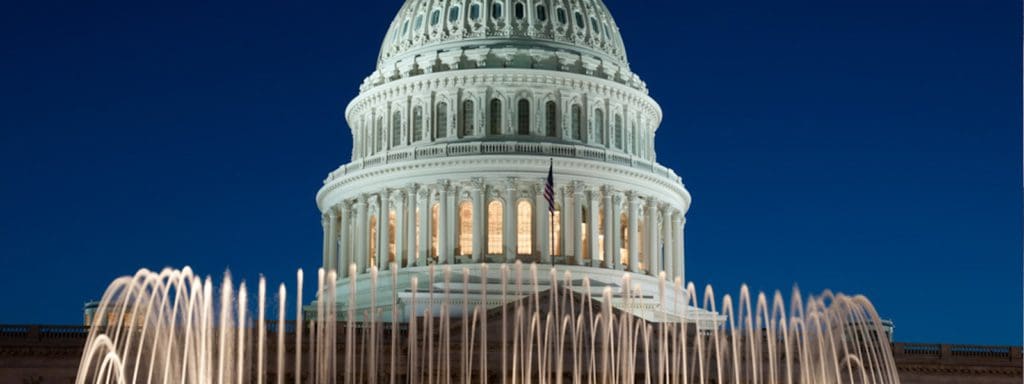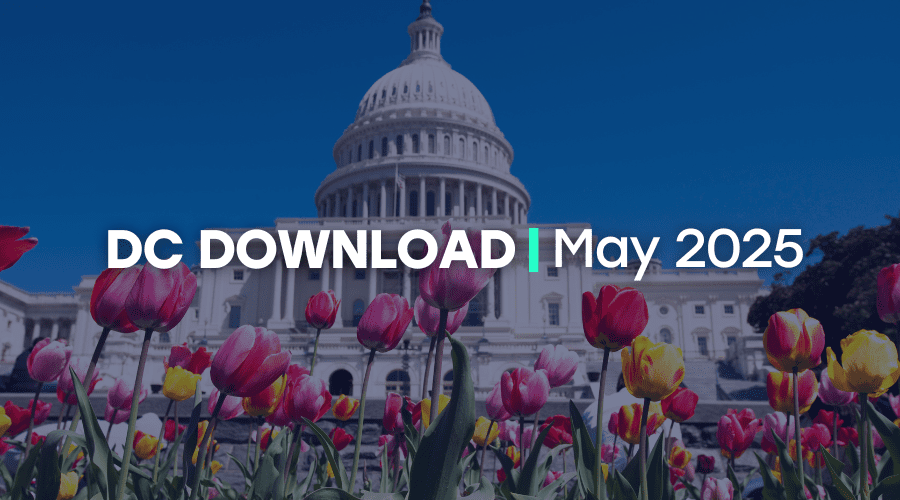Summer is just around the corner, but that has not stopped President Biden from gathering support for his infrastructure package by engaging with lawmakers. If you have been too busy to keep up with all the infrastructure talk, here is an overview of the latest legislative issues affecting nonprofits during these challenging times:
Infrastructure Negotiation Update
This month, President Biden held several meetings in The White House with Democratic and Republican lawmakers to foster bipartisan support for his infrastructure plan. The outlook for how President Biden’s infrastructure proposal may move in Congress with bipartisan or Democratic-only support depends on the release of the FY 2022 budget, now expected on May 28. The budget will be accompanied by the “Green Book” from the Treasury Department, which provides the fullest detail on the administration’s tax proposals and revenue estimates – details that could be critical as lawmakers look to offset significant spending. The other key issue for advocates to monitor is the ongoing talks between The White House and Republican senators, led by the Senate Committee on Environment and Public Works Ranking Member Shelley Moore Capito (R-WV). On May 21, the Biden Administration presented Republicans with an infrastructure counteroffer of $1.7 trillion.
President Biden’s proposal, known as the American Jobs Plan, had an original price tag of $2.25 trillion. It is an infrastructure investment package extending to the power grid, electric vehicles, broadband, highways, clean water, workforce development, and much more. Last month, Republicans unveiled a counteroffer of $568 billion with a narrower definition of infrastructure than the Democrats’ proposal.
An Update on Nonprofit Job Loss
According to the latest report from The Center for Civil Society Studies (CCSS) at Johns Hopkins University, April saw a small gain of under 18,000 nonprofit jobs compared to the previous month—representing a gain of just 2.2% of the nearly 830,000 jobs still lost as of March of this year.
The report states that April 2021 presented a mixed bag in terms of the recovery rate for the various fields of nonprofit activity, with two fields – “arts, entertainment, and recreation,” and “religious, grantmaking, civic, and professional organizations” – improving significantly on their March recovery rates, while social assistance organizations held steady. However, with fresh losses during April, the recovery rate for both health care and educational institutions fell into the negative column. Nonprofit educational institutions took a significant step back, losing 4.3% of the initial 323,000 jobs lost in that field during the first three months of the pandemic.
Paycheck Protection Program Out of Money
According to the Small Business Administration (SBA), as of May 4, the Paycheck Protection Program (PPP) ran out of funds four weeks before its May 31 application deadline. Congress allocated $292 billion to fund the program’s most recent round of loans.
Since its creation last year, the PPP has disbursed $780 billion in forgivable loans to fund 10.7 million applications, according to the latest government data. Congress renewed the program in December’s relief bill, expanding the pool of eligible applicants and allowing the hardest-hit organizations to return for a second loan.
Treasury Department Launches Coronavirus State and Local Fiscal Recovery Funds
On May 10, the Treasury Department announced the launch of the Coronavirus State and Local Fiscal Recovery Funds, established by the American Rescue Plan Act of 2021, to provide $350 billion in emergency funding for state, local, territorial, and Tribal governments. Treasury also released details on how the funds can be used to respond to acute pandemic-response needs, fill revenue shortfalls among state and local governments, and support the communities and populations hardest-hit by the COVID-19 crisis. Eligible state, territorial, metropolitan city, county, and Tribal governments will be able to access funding directly from the Treasury Department.
House Committee Advances Bipartisan Charitable Giving Legislation
On May 5, the House Ways and Means Committee marked up the Securing a Strong Retirement Act of 2021. The bill includes a modified version of the bipartisan Legacy IRA Act, introduced by Reps. Don Beyer (D-VA) and Mike Kelly (R-PA), which would enable seniors to make one-time, tax-free contributions from their individual retirement accounts to charities through life-income plans.
With many Americans unable to afford to give away their retirement income during their lifetime, Independent Sector and coalition partners worked closely with staffers of the House Ways and Means Committee, considering various policy options so prospective donors could have one more critical way to invest in the common good in a way that works for them. While the $50,000 limit on this provision is lower than in previous versions, it still represents a highly significant commitment from the bill’s authors and their staff.
“Buffett Rule” Bill Introduced
On May 17, Sens. Sheldon Whitehouse (D-RI) and Sherrod Brown (D-OH) introduced the Paying a Fair Share Act, also known as the Buffett Rule. This bill would set a minimum tax rate of 30% for taxpayers earning over $1 million. The Paying a Fair Share Act would apply only to taxpayers with income over $1 million, including capital gains and dividends, and would phase in over their second million dollars in income. The bill includes language to preserve the incentive for charitable giving, as it has since the proposal was first introduced in Congress in 2012.
The Obama administration proposed a 28% cap on charitable deductions in several of President Obama’s budget proposals, and the Biden campaign proposed a similar cap in 2020. Independent Sector and its allies have been advocating for an exemption from this cap for the charitable deduction.



